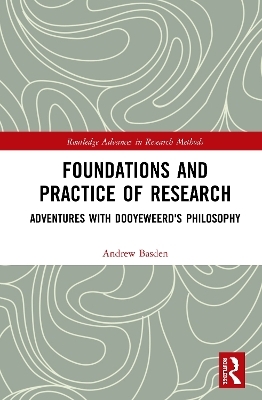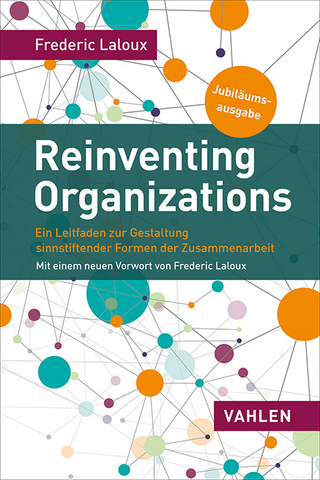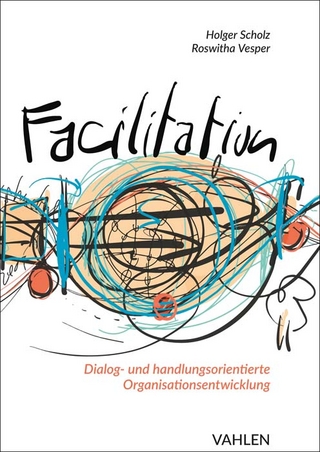
Foundations and Practice of Research
Routledge (Verlag)
978-1-138-72068-8 (ISBN)
Many of the issues on which meaningful research is founded are seldom discussed; for example, the role of everyday experience, diversity and coherence of meaning in the world, the meaningfulness and wider mandate of research, the very nature and validity of theoretical thought, and the deep presuppositions of philosophy and how they undermine the success of research.
Such questions are material to the philosophies that guide research thinking in all fields, and since they cannot be satisfactorily addressed in a piecemeal fashion, this book employs the radically different philosophy of Herman Dooyeweerd to consider them together. Parts I and II discuss these issues theoretically and philosophically, while Part III discusses them practically, specifically the adventures that researchers across the world have had using Dooyeweerd's philosophy.
Foundations and Practice of Research assembles a wide range of experiences of using Dooyeweerd's philosophy in research in the fields of mathematics, the natural sciences, the social sciences, design sciences and the humanities. Case studies demonstrate how Dooyeweerd's philosophy has been found fruitful in most stages of research, and the philosophical discussion backs this up. This book challenges researchers to join the adventures, including suggestions of potential research that could be carried out, as well as questions still left unanswered.
Andrew Basden is Professor of Human Factors and Philosophy in Information Systems at the University of Salford, UK. He has been active in research for 40 of the past 50 years, informed by 12 years of professional practice.
List of Tables
List of Figures
Preface
Acknowledgements
Chapter 1. Introduction
1-1. ADVENTURES WITH DOOYEWEERD'S PHILOSOPHY
1-2. RESEARCH
1-2.1 The Mandate of Research
1-2.2 Clarifying Concepts Used in This Book
1-2.3 Some Requirements for Research
1-2.4 Research Content, Activity and Application
1-2.5 Range of Fields
1-3. PRACTICE
1-4. FOUNDATIONS
1-4.1 Foundations of Research
1-4.2 Philosophy
1-4.3 Dooyeweerd and Philosophy
1-4.4 Resources
1-5. GUIDE FOR READERS
1-5.1 The Structure of the Book
1-5.2 Some Tips on Reading
PART I
Chapter 2. Research and Everyday Experience
2-1. SOME PRELIMINARIES
2-1.1 Differences Between Research and Everyday Experience
2-1.2 Relationships Between Research and Everyday Experience
2-2. THE RESEARCHER-WORLD RELATIONSHIPS: DETACHED OR PARTICIPANT OBSERVER?
2-2.1 Is Detached Observer Possible?
2-2.2 Is Detached Observer Desirable?
2-2.3 Dooyeweerd's View of the Researcher-World Relationship
2-3. THE RELATIONSHIP BETWEEN THEORETICAL AND PRE-THEORETICAL THINKING
2-3.1 Is Neutral Theoretical Thinking Desirable?
2-3.2 Is Neutral Theoretical Thinking Possible?
2-3.3 Dooyeweerd's View of Theoretical and Pre-theoretical Thinking
2-4. THE VALUE OF THEORETICAL AND PRE-THEORETICAL KNOWLEDGE
2-5. UNDERSTANDING EVERYDAY, PRE-THEORETICAL EXPERIENCE
2-5.1 Interest in Everyday Experience
2-5.2 Appealing to Everyday Experience
2-5.3 Starting with Everyday Experience
2-6. EVERYDAY EXPERIENCE AND RESEARCH
2-6.1 The Everyday Experience of Applying Research
2-6.2 Research Activity as Everyday Experience
2-6.3 Everyday Experience in Research Content
2-7. CONCLUSIONS
Chapter 3. Diversity and Coherence
3-1. A PHILOSOPHICAL LOOK AT DIVERSITY AND COHERENCE
3-2. DOOYEWEERD'S ASPECTS
3-2.1 An Initial Look At Diversity
3-2.2 Aspects as Modes
3-2.3 Irreducibility of Aspects
3-2.4 Inter-aspect Coherence
3-2.4.1 Aspectual simultaneity
3-2.4.2 No conflict among aspects
3-2.4.3 Inter-aspect analogy
3-2.4.4 Inter-aspect dependency
3-2.4.5 The Order of Aspects
3-3. DIVERSITY AND COHERENCE OF RESEARCH ACTIVITY
3-4. DIVERSITY AND COHERENCE OF RESEARCH APPLICATION
3-5. DIVERSITY AND COHERENCE IN RESEARCH CONTENT (THEORIES)
3-5.1 Diversity and Coherence of Research Fields
3-5.2 Diversity and Coherence of Data Collected in Research
3-5.3 Diversity and Coherence Within Concepts
3-5.4 Diversity and Coherence in Research Findings / Theories
3-6. CONCLUSION
Chapter 4. Meaning in Research and Reality, and an Overview of Dooyeweerd's Understanding of Reality
4-1. PRELIMINARIES
4-2. TREATMENT OF MEANING IN PHILOSOPHY
4-3. MEANINGFULNESS AS THE FOUNDATION FOR ONTOLOGY, EPISTEMOLOGY AND AXIOLOGY
4-3.1 Diversity and Coherence of Meaning
4-3.2 Aspects: Spheres of Meaningfulness
4-3.3 Meaningfulness as the Ground of Being
4-3.4 Types and Identity
4-3.5 Structural Relationships
4-3.6 Meaning and Rationality
4-3.7 Meaning, Value and Good
4-3.8 Law, Functioning and Repercussion
4-3.8.1 Law: the possibility of functioning and repercussion
4-3.8.2 Multi-aspectual functioning
4-3.8.3 Society, progress and meaningfulness
4-3.8.4 Meaningful properties and functional relationships
4-3.9 Subject and Object in Terms of Meaningfulness and Law
4-3.10 Prior Meaningfulness and the Metaphor of Ocean
4-3.11 Towards a Model of Meaning
4-3.11.1 The proposed model
4-3.11.2 Application to philosophy
4-3.12 Meaningfulness and Knowing the World
4-3.13 Knowing Meaningfulness Itself: Delineating the Aspects
4-3.14 Meaning, Time and Self
4-4. POTENTIAL RELEVANCE FOR RESEARCH
4-4.1 Meaningfulness and Research Application
4-4.2. Meaningfulness and Research Activity
4-4.3 Meaning and Research Content
4-5. CONCLUSION
Chapter 5. Research and Philosophy
5-1. ROLES OF PHILOSOPHY IN RESEARCH
5-1.1 Ontology, Epistemology and Axiology
5-1.2 Philosophy as Approach
5-1.3 Philosophy as Foundation
5-1.4 Philosophy as Source of Conceptual Tools and Methods
5-2. LEVELS OF PRESUPPOSITION
5-2.1 Worldviews
5-2.2 Ground-motives
5-2.3 Ground-motives as Presuppositions not Truths
5-2.4 Differences Between Dialectical and Pluralist Ground-motives
5-3. STANDPOINTS
5-3.1 Problems Resulting from the Immanence Standpoint
5-3.2 Alternative Standpoints
5-3.3 Towards a Different Standpoint
5-4. THE DEVELOPMENT OF DOOYEWEERD'S PHILOSOPHY
5-4.1 Struggles with the Immanence Standpoint
5-4.2 Seeking a "Christian" Philosophy
5-4.3 Fresh Insights for Research
5-5. CROSSING RESEARCH PHILOSOPHY BOUNDARIES
5-6. CONCLUSION
PART II
Chapter 6. On Theoretical Knowledge and Research
6-1. THE CHALLENGE OF TRUTH
6-1.1 Realism and Anti-Realism: Is There Generic Truth?
6-1.2 About Truth
6-1.3 Dooyeweerd's Critique of Truth
6-2. ON THE NON-NEUTRALITY OF THEORETICAL THOUGHT
6-2.1 Dooyeweerd's Immanent Critique of Theoretical Thought
6-2.2 Dooyeweerd's Transcendental Critiques of Theoretical Thought
6-3. DOOYEWEERD'S SECOND TRANSCENDENTAL CRITIQUE OF THEORETICAL THOUGHT
6-3.1 Preparing to Understand the Transcendental Problems
6-3.2 The Starting Question
6-3.3 First Transcendental Problem (TP1), Abstraction: Thinker and Diversity of World
6-3.4 Second Transcendental Problem (TP2), Reuniting That Which Was Set Asunder: Rationalities and Responsibility
6-3.5 Third Transcendental Problem (TP3), Grounds of Critical Self-Reflection: Origin of Meaning
6-3.6 Ground-motives as Origins of Meaning
6-3.7 Summary
6-4. DOOYEWEERD'S PERSPECTIVE ON TRUTH
6-5. CONCLUSION
Chapter 7. Ground-Ideas: How Philosophies Work
7-1. DOOYEWEERD'S NOTION OF THREE-PART GROUND-IDEA
7-1.1 Ground-Ideas of Philosophy: A Tool for LACE
7-1.2 Diversity of World
7-1.2.1 Data from the world
7-1.2.2 On sources of data
7-1.2.3 Secondary data and use of instruments
7-1.3 Coherence of Rationalities
7-1.4 Wider Meaningfulness and Origin of Meaning
7-1.5 Ground-Idea Analysis: Example from Sociolinguistics
7-1.6 Reflection
7-2. ON PROGRESS AND ADVANCE IN KNOWLEDGE
7-2.1 Clarification Offered by the Notion of Ground-Idea
7-2.2 Accounts of Dialectic
7-3. GROUND-IDEAS A BASIS FOR DIALOGUE
7-3.1 An Example: Positivist, Interpretivist and Socio-critical Approaches
7-3.2 Reflection
7-4. APPLICATIONS OF GROUND-IDEAS IN RESEARCH PROJECTS
7-4.1 Ground-Ideas as Research Philosophy
7-4.2 On Bias in Research
7-5. CONCLUSION
Chapter 8. Fields of Research
8-1. UNDERSTANDING RESEARCH FIELDS AND DISCIPLINES
8-1.1 Some Approaches
8-1.2 Fields as Centred on Aspects
8-1.3 Secondary Aspects
8-1.4 Wider Meaningfulness: Applications and Interdisciplinary Research
8-1.5 Conclusions About Fields
8-2. ON PARADIGMS
8-2.1 The Idea of Paradigm
8-2.2 A Dooyeweerdian View: Paradigms as Meaningfulness
8-2.3 An Example: Linguistics and Sociolinguistics
8-3. CONCEPTS AND IDEAS IN A FIELD
8-4. CONCLUSION
PART III
Chapter 9. Dooyeweerd's Suite of Aspects
9-1. DESCRIPTION OF EACH ASPECT
9-1.1 The Quantitative Aspect
9-1.2 The Spatial Aspect
9-1.3 The Kinematic Aspect
9-1.4 The Physical Aspect
9-1.5 The Organic / Biotic Aspect
9-1.6 The Psychic / Sensitive Aspect
9-1.7 The Analytical Aspect
9-1.8 The Formative Aspect
9-1.9 The Lingual Aspect
9-1.10 The Social Aspect
9-1.11 The Economic Aspect
9-1.12 The Aesthetic Aspect
9-1.13 The Juridical Aspect
9-1.14 The Ethical Aspect
9-1.15 The Pistic Aspect
9-2. GROUPING THE ASPECTS?
9-3. COMPARISON WITH OTHER SUITES
9-4. ON TRUSTING DOOYEWEERD'S SUITE
9-5. CONCLUSION
Chapter 10. The Complex Activity of Research
10-1. OVERALL APPROACH: "LACE"
10-1.1 The Elements of LACE
10-1.2 Example of LACE with Information Systems Approaches
10-1.3 Examples of LACE with Foundations of Information Systems
10-2. RESEARCH AS MULTI-ASPECTUAL FUNCTIONING
10-3. THE MORE VISIBLE ASPECTS OF RESEARCH ACTIVITY
10-4. SOME LESS-OBVIOUS ASPECTS OF RESEARCH ACTIVITY
10-4.1 Less-obvious Pistic Functioning in Research
10-4.2 Less-obvious Ethical Aspects in the Activity of Research
10-4.3 Less-obvious Juridical Functioning in Research
10-4.4 Less-obvious Aesthetic Functioning in the Activity of Research
10-4.5 Less-obvious Economic Functioning in Research
10-4.6 Less-obvious Social Functioning in Research
10-4.7 Less-obvious Lingual, Formative and Analytic Functioning in Research
10-4.8 The Early Aspectual Functioning in Research
10-5. A CASE STUDY: ACTIVITIES IN A KNOWLEDGE PROJECT
10-6. CONCLUSIONS
CHAPTER 11. Experience of Research Using Dooyeweerd
11-1. STAGES OF RESEARCH USING DOOYEWEERD
11-2. UNDERSTANDING THE DISCOURSES AND LITERATURE OF A FIELD WITH DOOYEWEERD
11-2.1 Methods Involving Ground-motives
11-2.2 Joneidy's Analysis of Seminal Papers
11-2.3 Understanding Collections of Papers
11-2.4 More Complex Inter-Discourse Analysis
11-2.4.1 Breems' study
11-2.4.2 Basden's study
11-2.4.3 Reflection on heatmaps
11-3. CONCEPTUAL FRAMEWORKS: DOOYEWEERDIAN ADVENTURES AMONG PARADIGMS
11-3.1 Critique of Paradigms in Statistics
11-3.2 Paradigms and Frameworks in Systems Thinking
11-3.3 A Multi-aspectual Paradigm in Sustainability
11-3.4 A New Paradigm of the State and Civil Society
11-3.5 New Paradigm in Knowledge Management and Tacit Knowledge
11-3.6 New Paradigms and Frameworks in the Information Systems Field
11-3.6.1 ISD: Information systems development, including programming
11-3.6.2 IT features
11-3.6.3 IT/IS use
11-3.6.4 IT and society
11-3.6.5 Nature of information and computers
11-3.7 Broadening Paradigms in Engineering
11-3.8 Reflection
11-4. CONCEPTUAL FRAMEWORKS: CLARIFYING CONCEPTS AND IDEAS
11-4.1 Understanding a 'Simple' Concept: Diagrams
11-4.2 Exploring a More Complex Concept: Idolatry
11-4.3 Multi-aspectual Concepts: Information, Documents
11-4.4 Complex Notions Inforporating Antecipations and Retrocipations
11-4.5 Contributing Ideas to Philosophy
11-5. USING DOOYEWEERD TO DISCUSS RESEARCH METHODS
11-6. DATA COLLECTION WITH DOOYEWEERD
11-6.1 Using Aspects to Design Questionnaires
11-6.2 MAKE: Multi-aspectual Knowledge Elicitation
11-6.3 MAIT: Multi-aspectual Interview Technique
11-6.4 Practical Reflections on MAKE and MAIT
11-6.5 Philosophical Reflections on MAKE and MAIT
11-6.6 Eliciting Detailed Expertise
11-7. USING DOOYEWEERD IN DATA ANALYSIS
11-7.1 Simple Aspectual Analysis
11-7.2 Finding Hidden Meanings: What Motivated Seminal Papers
11-7.2.1 The method
11-7.2.2 Results
11-7.2.3 Challenges
11-7.3 Researching Everyday Down-to-earth Issues
11-7.3.1 The first study
11-7.3.2 The second and third studies
11-7.3.3 Quantitative and qualitative analyses
11-7.3.4 Comparative analyses
11-7.3.5 The value of extra, volunteered information
11-7.3.6 The literature versus everyday experience
11-7.3.7 Reflection on aspectual analysis of down-to-earth issues
11-7.4 Complex Quantitative Comparisons
11-7.5 Complex Qualitative Comparisons
11-7.6 Overview
11-8. EXTENDING THESE IDEAS: NEW ADVENTURES AWAITED
11-8.1 Using Dooyeweerd at Beginning and End of Research
11-8.2 Using Dooyeweerd in Observation
11-8.3 Using Dooyeweerd in Natural and Mathematical Sciences
11-9. CONCLUSION
PART IV
CHAPTER 12. Criticisms of Dooyeweerd
12-1. CRITICISMS OF DOOYEWEERD'S IDEAS
12-1.1 Critiques of Dooyeweerd's Approach to Everyday Experience
12-1.2 Critiques of Dooyeweerd's View of Non-Neutrality or Non-Autonomy of Theoretical Thought
12-1.3 Critiques of Dooyeweerd's Approach to Diversity and Coherence
12-1.4 Critiques of Dooyeweerd's Idea of Meaning(fulness)
12-1.5 Critiques of Dooyeweerd's Notion of Being as Meaningfulness
12-1.6 Critiques of Dooyeweerd's idea of Good and Evil
12-1.7 Critiques of Dooyeweerd's idea of Aspectual Functioning
12-1.8 Critiques of Dooyeweerd's View of History and Progress
12-1.9 Critiques of Dooyeweerd's View of Ground-motives
12-1.10 Critiques of Dooyeweerd's Idea of the Immanence Standpoint
12-1.11 Critiques of Dooyeweerd's Transcendental Critiques of Theoretical Thought
12-1.12 Critiques of Dooyeweerd's idea of Antithesis between Christian and Non-Christian Thought
12-1.13 Critiques of Dooyeweerd's Aspects
12-2. REFLECTION
Chapter 13. Summary and Conclusions
13-1. SUMMARY OF CONTRIBUTIONS TO RESEARCH
13-1.1 Overall Benefits
13-1.2 Contributions to Research Content
13-1.3 Contributions to Research Activity
13-1.4 Contributions to Research Application
13-2. THE CHANGING WORLD OF RESEARCH
13-3. COVERAGE OF DOOYEWEERD'S PHILOSOPHY
13-4. THE ADVENTURE IS JUST BEGINNING
References
Index
| Erscheinungsdatum | 28.08.2019 |
|---|---|
| Reihe/Serie | Routledge Advances in Research Methods |
| Zusatzinfo | 15 Tables, black and white |
| Verlagsort | London |
| Sprache | englisch |
| Maße | 152 x 229 mm |
| Gewicht | 1400 g |
| Themenwelt | Wirtschaft ► Betriebswirtschaft / Management ► Planung / Organisation |
| Wirtschaft ► Betriebswirtschaft / Management ► Unternehmensführung / Management | |
| ISBN-10 | 1-138-72068-2 / 1138720682 |
| ISBN-13 | 978-1-138-72068-8 / 9781138720688 |
| Zustand | Neuware |
| Haben Sie eine Frage zum Produkt? |
aus dem Bereich


